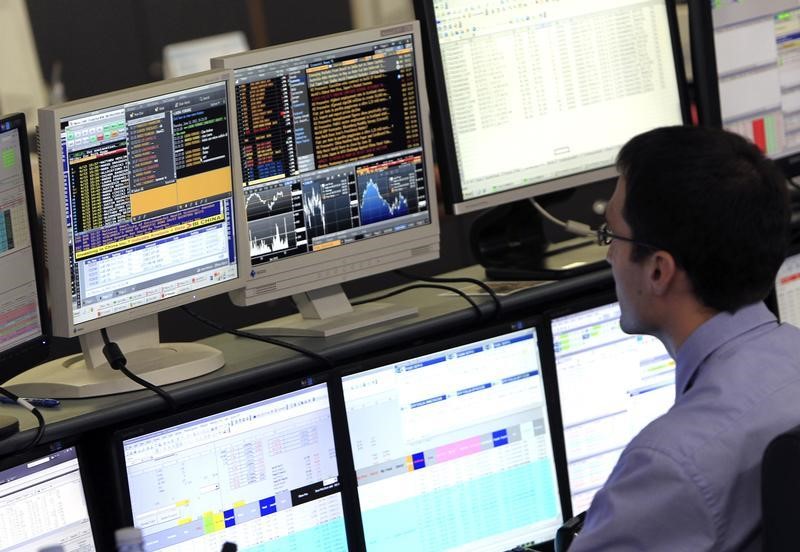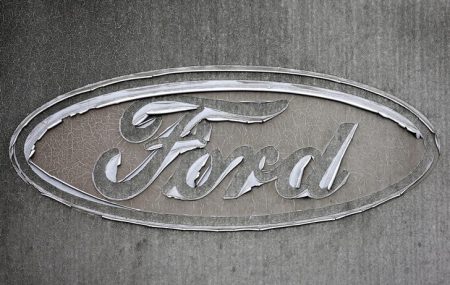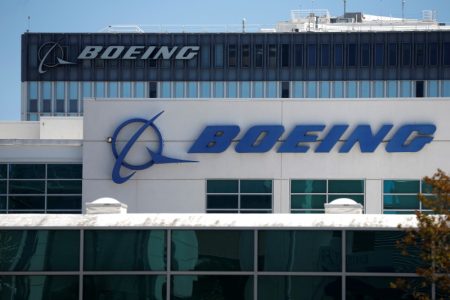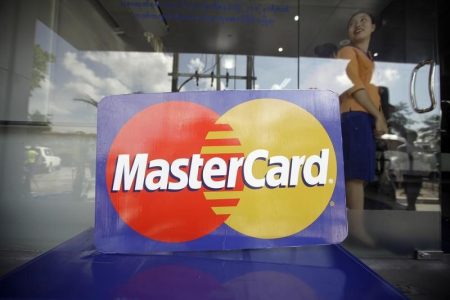© Reuters.
Expro Group Holdings N.V. (NYSE: XPRO), a global oilfield services company, reported strong financial results for the fourth quarter of 2023, with a revenue of $407 million and adjusted EBITDA at $85 million. The company’s growth in North and Latin America significantly contributed to these results, and a positive market outlook is expected to continue into 2024. Expro also completed the acquisition of Coretrax for $210 million, aiming to enhance its well construction and integrity solutions and deliver increased shareholder value through cost synergies.
Key Takeaways
- Expro’s Q4 2023 revenue increased to $407 million, a 16% year-over-year growth.
- Adjusted EBITDA reached $85 million, with a margin of 21%.
- The company’s backlog is robust at $2.3 billion.
- Coretrax acquisition for $210 million is expected to be accretive to Expro’s shareholder value.
- Expro aims for $1.6-1.7 billion in revenue and $325-375 million in adjusted EBITDA for 2024.
- The company maintains good liquidity with around $300 million available at year-end.
Company Outlook
- Expro forecasts 2024 revenue between $1.6-1.7 billion and adjusted EBITDA of $325-375 million.
- A medium-term goal of $2 billion in revenue and over 25% in adjusted EBITDA margins, driven by subsea and well construction growth.
- Positive market outlook for 2024, with continued growth trends, especially in offshore spending.
Bearish Highlights
- Approximately 30% of the business is production-related, with no expected pricing traction in that segment.
Bullish Highlights
- Coretrax brings over 250 patents and 50+ technologies to Expro, enhancing their service offerings.
- Expro sees good growth opportunities in MENA, North and Latin America, Asia Pacific regions.
- The company is focused on expanding its cementing technologies and performance drilling tools business.
Misses
- Expro decided not to recover the subsea module, focusing on cost avoidance instead.
Q&A Highlights
- Expro is selective with mergers and acquisitions (M&A), focusing on transformative potential, industrial logic, and financial logic.
- The acquisition of Coretrax and DeltaTek is seen as transformative, bringing in new technology, services, and customer relationships.
- The company is actively redeploying assets from US land to stronger markets, indicating a strategic optimization of their asset portfolio.
In conclusion, Expro’s Q4 2023 earnings call revealed a strong financial performance with strategic acquisitions poised to enhance the company’s market position. The acquisition of Coretrax is a significant move expected to contribute to the company’s growth and profitability. Expro remains committed to disciplined cost management, strategic M&A, and maximizing asset utilization to drive future growth and shareholder value.
InvestingPro Insights
Expro Group Holdings N.V. (NYSE: XPRO) has shown a robust financial performance in the last quarter of 2023, as highlighted by the recent earnings call. To add further context to the company’s current financial health and market position, here are some key insights based on real-time data from InvestingPro:
InvestingPro Data:
- The company holds a market capitalization of $2.13 billion, reflecting its substantial size in the oilfield services industry.
- With a revenue growth of 19.02% in the last twelve months as of Q3 2023, Expro demonstrates a strong capacity to expand its earnings.
- Expro’s price as of the previous close stands at $19.23, with recent performance indicating a 22.98% return over the last three months, signaling strong investor confidence.
InvestingPro Tips:
- Analysts have taken note of Expro’s financial trajectory, with two analysts revising their earnings upwards for the upcoming period, suggesting a positive outlook on the company’s future profitability.
- The company’s strategic acquisitions, such as Coretrax, are expected to contribute significantly to its service offerings and market growth, aligning with the InvestingPro Tip that Expro holds more cash than debt on its balance sheet, indicating a strong financial position to support such strategic moves.
For readers looking to delve deeper into Expro’s financials and market prospects, additional InvestingPro Tips available at https://www.investing.com/pro/XPRO can offer valuable insights. There are 9 more tips listed that could further inform investment decisions. To access these insights, consider using the coupon code PRONEWS24 for an additional 10% off a yearly or biyearly Pro and Pro+ subscription.
Full transcript – International Nv (XPRO) Q4 2023:
Operator: Hello, everyone, and welcome to the Expro Q4 2023 Earnings Presentation. My name is Emily and I’ll be coordinating your call today. After the presentation, there will be the opportunity for you to ask any question. [Operator Instructions] I will now turn the call over to our host, Quinn Fanning, Chief Financial Officer. Please go ahead.
Quinn Fanning: Welcome to Expro’s fourth quarter 2023 conference call. I am joined today by Expro CEO, Mike Jardon. First, Mike and I have some prepared remarks. Then we will open it up for questions. We have an accompanying presentation on our fourth quarter results just posted on the Expro website, expro.com under the Investors section. In addition, supplemental financial information for the fourth quarter and full year results is downloadable on the Expro website likewise under the Investors section. I’d like to remind everyone that some of today’s comments may refer to or contain forward-looking statements. Such remarks are subject to risks and uncertainties that could cause actual results to differ materially from those expressed or implied by such statements. Such statements speak only as of today’s date and the company assumes no responsibility to update forward-looking statements as of any future date. The company has included in its SEC filings, cautionary language identifying important factors that could cause actual results to be materially different from those set forth in any forward-looking statements. More complete discussion of these risks is included in the company’s SEC filings, which may be accessed on the SEC’s website, sec.gov or on our website again at expro.com. Please note that any non-GAAP financial measures discussed during this call are defined and reconciled to the most directly comparable GAAP financial measure in our fourth quarter 2023 earnings release, which can also be found on our website. With that, I’d like to turn the call over to Mike.
Mike Jardon: Thank you Quinn. Good afternoon, everyone. I’d like to start off by reviewing the fourth quarter financial results presented in today’s earnings press release. I will then discuss the macro environment, which we believe supports a favorable multiyear outlook for energy services companies, levered to international and offshore markets and presents a compelling growth opportunity for Expro. Finally Quinn will share our outlook for 2024. For a recap of consolidated results and quarterly results by region, I’ll direct you to slides 3 through 7 of the presentation that we posted to expro.com. As you can see on slide 3, Expro begins 2024 in a strong position for growth having delivered a solid fourth quarter with actual results at/or above the high end of the revenue and adjusted EBITDA guidance ranges that we provided on our third quarter earnings call. Fourth quarter revenue was $407 million and adjusted EBITDA was $85 million or 21% of revenue. Adjusted EBITDA for the three months ending December 31 includes $4 million of unrecoverable LWI related costs. Excluding such costs, adjusted EBITDA would have been $89 million or 22% of revenue. Revenue for the 12 months ended December 31, 2023 was $1.5 billion, up 18% year-over-year. Adjusted EBITDA for 2023 was $249 million or 16% of revenue. Excluding unrecoverable LWI related costs of $36 million, adjusted EBITDA for 2023 would have been $285 million or 19% of revenue. Most significantly fourth quarter results reflect the expected rebound in North and Latin America activity. The notable step-up in revenue and profitability in the fourth quarter followed a relatively weak third quarter. NLA revenue at $145 million was up sequentially by $40 million primarily reflect the increased well construction activity in the US Gulf of Mexico and Guyana and a rebound in well testing activity in Mexico. In addition, Q4 results include results of recently acquired PRT Offshore, which generated approximately $15 million of revenue in the December quarter. NLA segment EBITDA at 30%, reflects the significant step up in revenue and a good mix of higher-margin activity. While the Q3 results reflected a confluence of factors, the NLA team has delivered very solid results, since we completed the merger back in October of 2021 with approximately $1.1 billion of aggregate revenue over the last nine quarters. NLA segment EBITDA margin has averaged 27% since mid-2022. Operationally, noteworthy NLA, our Tubular Running Services or TRS business achieved an Industry-First, in the Gulf of Mexico, by successfully completing an operator’s well using a fully non-marking completion running package. This running package provides the industry’s only truly non-marking tubular running solution, which helps preserve well integrity and extends the life cycle of the well. This was also the first deployment of the Collar Load Support system in the region. The success of this completion run was the culmination of extensive planning and testing with a super major customer. This is a great example of our ability to provide solutions and positive results for the industry’s most complex wells. For Europe and Sub-Saharan Africa, revenue at $134 million was generally flat quarter-over-quarter with lower revenue recognized on our ongoing ENI (BIT:) project in Congo. ESA segment EBITDA margin at 31% has been strong over the last several quarters. Notable in the ESA region, we were awarded a corporate frame agreement to deliver well testing services for Equinor in the Norwegian Continental Shelf. The four-year contract with the potential of three, two -year options build on Expro’s previous seven-year agreement. The scope of work includes well flow management and production optimization services to enhance Equinor’s assets across completion, intervention, production as well as abandonment operations. Building on the corporate frame agreement, the work scope will see the delivery of hydraulic intervention well services, using our innovative CoilHose, light well circulation system that is designed to provide a more efficient and lower carbon footprint approach to operations versus traditional coiled tubing. A significant portion of the contract is directly linked to the demonstrable commitment to a low carbon plan allowing Expro to implement its environmental capabilities with Equinor and further enhance the strength and depth of this partnership. The Middle East and North Africa team also delivered an excellent quarter with revenue up 13% sequentially to $65 million and good fall-through on incremental revenue. META (NASDAQ:) segment EBITDA margin at 33% was up about 3.5 percentage points quarter-over-quarter. Noteworthy in MENA, Expro’s Automated Bucking and Catwalk system delivered improved safety and record efficiency on one of our clients’ challenging wells. We were contracted to provide a high-quality, low-risk tubular running service to our clients’ onshore fleet of drilling rigs. Making an operational first for the triple catwalk in the Emirates, on the initial deployment of our TRS system, we set a record for instantaneous tripping speed and the second-best performance overall tripping speed while running 18 5/8 tubulars. The overall rate was more than twice that of the average run in the same field previously. Finally, in Asia Pacific, fourth quarter revenue was $62 million, down 13% relative to the September quarter primarily reflecting lower Subsea Well Access revenue, following our suspension of vessel deployed Light Well Intervention operations in September. At 9%, Asia Pacific segment EBITDA margin reflects demobilization and other unrecoverable LWI related costs. Excluding unrecoverable LWI related costs, Asia-Pacific segment EBITDA margin would have been 16%. Quinn will provide an update on our Light Well Intervention business in his prepared remarks. During the fourth quarter, Expro completed in an Asia-Pacific region, the deepest deployment of our Mark 6 CoilHose coupled with a successful nitrogen lifting application a remote location offshore New Zealand. This marked the first ever Mark 6 CoilHose deployment in Asia-Pacific, reaching an impressive depth of 8,650 feet, surpassing debts achieved globally by approximately 25%. The CoilHose solution provides a swift breakup time compared to traditional coiled tubing, minimize planning, and operational duration. This streamlined approach not only reduces safety risk, but also lessens the environmental impact during well intervention operations. In terms of commercial activity, we built a healthy order book for the first three quarters of 2023 and I’m pleased that we have continued to build on this momentum. During the fourth quarter, we captured roughly $186 million of new contract awards including a production manpower contract worth roughly $50 million in Thailand. Other notable contract awards during the quarter included several subsea contracts across both West Africa where we were awarded a contract to provide subsea services for a multiyear plug and abandonment campaign and also in Australia. The NLA team was also awarded a multiyear well test contract in Latin America, which highlighted the importance of service quality in a very competitive market. At quarter end, our backlog was approximately $2.3 billion, which is down modestly from September 30th and is generally consistent with historical seasonal patterns of contracts awards in the year-end period. I will also note that Expro is increasingly working with larger interview services providers where we have complementary capabilities and operating footprints to deliver integrated services and solutions for our common customers. Our reputation for safety, service delivery, and cost-effective innovative solutions enables us to collaborate effectively with other service partners. In addition to a number of technology awards that are highlighted in our press release, we had several operational and commercial successes during the fourth quarter, which are summarized on Slide 8 of our earnings presentation. The fourth quarter of 2023 marked 40 years since the launch of our first Subsea Test Tree system. Since then Expro has remained at the forefront of Subsea Landing String technology. We have undertaken more than 3,000 subsea deployments in exploration and appraisal, completion, and intervention applications and remain a global leader in large bore Subsea Test Reassembly solutions. The evolution of this market and these assemblies has allowed us to expand into the open water well intervention business through the introduction of both riser-based and riser-less well intervention solutions. I’m also pleased to share that Expro was named Energy Transition Pioneer of the Year at the 2023 Global OWI Awards, and recognition to our commitment of sustainable energy solutions. This recognition reflects Expro’s critical role in creating a cleaner and more sustainable future. We have a number of initiatives underway across our business that build on our work to both reduce our own emissions as well as to support our clients in achieving their sustainability targets. We’re innovating with a purpose by adapting and investing in technologies that are focused on carbon capture, use, and storage, the geothermal sector, and emissions monitoring management, and mitigation solutions. Just a few days ago, we announced that Expro had entered into a definitive agreement to acquire a leading oil and gas well integrity and production optimization company Coretrax. Total consideration is roughly $210 million. And we expect to close this transaction sometime in the second quarter. The acquisition is expected to be accretive to adjusted EBITDA margin and free cash flow. With an enterprise value of less than five times, our estimate for stand-alone 2024 EBITDA, the Coretrax transaction should also be immediately accretive to shareholder value with cost and revenue synergies providing incremental upside. Headquartered in Aberdeen, Coretrax has operations globally with over 50 technologies and impressive intellectual property portfolio of more than 250 patents. We’re excited to welcome John Fraser and his teammates to Expro and to incorporate the Coretrax suite of technology-enabled solutions into our Well Construction and Well Intervention & Integrity businesses. As many of you may know, Expro is a market leader in deepwater Tubular Running Services with a range of technology differentiated solutions. TRS and tubular products, represents about 80% of our 2023 well construction revenue of $534 million. Our overall strategy is to develop in-house as well as acquire complementary services and solutions that allow us to leverage our global operating footprint, become more relevant to our customers around the world, expand margins and improve free cash flow performance. Consistent with the strategy, within well construction, we are focused on growing our cementing technologies and performance drilling tools business. In addition to adding breadth to businesses in which Expro has expertise and experience, the cementing technologies and performance drilling solutions that we are focused on tend to complement rather than compete with a Downhole Drilling, Surveying and Logging offerings of larger service companies. While our preference in most cases is to contract directly with operators, our market-leading Deepwater TRS business and a suite of Innovative Cementing Technologies and Performance Drilling solutions allows us to be a preferred services partner with both the larger service companies as well as the drilling contractors. Expro’s Cementing Technology business was bolstered with a small technology acquisition DeltaTek that was completed in early 2023. Cementing Technologies is approaching $100 million of revenue annually. With good margins and low capital intensity, we see the potential to grow that business to $200 million to $250 million of annual revenue within the next couple of years. Similarly, combining Coretrax’ Field Proven technologies and Performance Drilling and Wellbore Cleanup with Expro’s existing drilling optimization portfolio, provides a comprehensive solutions toolbox. Coretrax adds meaningful scale, to an attractive business, at what we believe to be a compelling valuation with combined revenue of more than $100 million that combined Expro and Coretrax Drilling Technologies business will have critical mass and scope for good growth and high incremental margins. In addition to Performance Drilling Tools and world Wellbore Cleanup Solutions Coretrax best-in-class expandables business, provides us with additional capabilities within our Well Intervention and Integrity Product line. Expandables are used in both drilling applications and to extend the life of existing well stock, either as a permit solution to a repair zone of damage or to isolate existing perforations prior to refracking. Coretrax’ expandable business is more levered to production optimization and drilling activity providing Expro with additional breadth to our Well Intervention and Integrity offering and to expand our OpEx levered revenue. From a regional perspective, Coretrax strengthens our presence in the ESSA and MENA regions where both companies have strong established relationships and adds new revenue opportunities and areas for growth in North and Latin America Asia Pacific. About half of the Coretrax’ 2023 revenue, originated in MENA and additional breadth that Coretrax adds to our portfolio of services and solutions will allow us to more fully participate in MENA projects, which are expected to substantially increase over the coming decade. The business of Expro and Coretrax in Saudi is less levered to new offshore oil developments than it is to gas and unconventionals, so we continue to expect good growth in the Kingdom. Based on recent comments from a Saudi Aramco (TADAWUL:) official that they expect to be very, very busy rather than very, very, very busy over the next several years, we also agree with several of the sell-side market analyst comments that the market reaction to Aramco’s capacity growth curtailment announcement was a little bit overblown. More broadly regarding M&A, our team looks at a lot of acquisition opportunities. We analyze many of these in detail and for a variety of reasons take a pass on most of them. We do believe however, that additional consolidation is good for the long-term health of the energy services sector and that we can utilize smart synergies focused M&A to accelerate growth and create shareholder value for Expro. The proposed Coretrax acquisition like the PRT Offshore acquisition that we completed in the fourth quarter of 2023 will provide breadth to an existing product line, increase differentiated technology and add incremental scale in select geomarkets. For both Coretrax and PRT offshore, we think the valuation was attractive with potential cost and revenue synergies providing additional upside. In both cases, the consideration mix reflects our intent to maintain a low leverage capital structure. Turning to our market outlook. We expect current growth trends to continue in 2024 and beyond. With the best available information indicating that oil demand will surpass 2023 pre-pandemic levels at approximately 103 million barrels per day. This momentum will be driven by continued recovery in Asia, improving macroeconomic data for the US and Europe and an increase in global travel with subsequent increase in jet fuel demand. We believe the pace of growth is stabilizing, which along with production restraint by OPEC provides market tailwinds supporting sustained investment and activity growth in the high single to low double-digits. The EI forecast average barrel prices will remain flat overall year-on-year with average 2024 prices of about $82 per barrel. I will caution that geopolitical turmoil including ongoing conflicts in the Middle East could result in upward pricing pressure as we progress throughout the year. Constructive pricing levels should allow our oil company customers to make final investment decisions on new projects including FIDs on the long-cycle development projects that characterize the international in offshore markets and to which Expro is most levered. In the gas markets, we observed high inventories in storage due to a warmer than normal winter in the Northern Hemisphere and a persistent lack of sustained cold weather in the first part of the US winter. These trends have loosened market conditions resulting in slightly lower forward gas price forecasts. In our view, gas will remain a structural source of lower carbon electricity generation and a critical transition fuel on the path towards global net zero. As a result, the case for continued investment in LNG to meet the ongoing requirements of Europe and Asia remains very strong. Operators continue to focus on shareholder returns and maintaining fiscal discipline. Upstream investments are expected to continue to grow following the positive post-pandemic trends and spending that we observed through 2023. Development activities provide relatively good visibility for strong and sustained offshore spending over the medium-term, with global offshore FIDs in each of 2024 and 2025 likely to be in the $100 billion area and projects in Norway, Brazil, Guyana and Angola collectively will attract the largest share of offshore development budgets. Additionally, strong activity growth in international land is forecasted in the Middle East in countries such as Saudi, the Emirates and Qatar in support of the ongoing large gas and LNG developments. The industry experienced a record level of project FIDs in 2023. This growth in capital commitments and the multiyear sanctioned projects pipeline through 2030 is driving demand for our services and solutions. Specifically, we’re experiencing increased activity in our well construction and subsea well access businesses, as well as elements of our well flow management business, which apart from moving into an operations and maintenance phase on our Congo project, we envision will grow further through 2024. Similarly, energy security, diversification of supply, operators’ desire to maximize investments from existing assets and a drive for cost-efficient lower carbon production continues to drive further demand for our production optimization related activities, within well flow management and well intervention integrity product lines, especially across the Asia Pacific and Latin America regions. Despite robust commodity pricing and production optimization efforts, the number of mature assets reaching the end of their economic and environmentally sustainable life continues to increase, particularly in Europe and in the US. This underpins the increased activity in the decommissioning market and a growing requirement for cost-effective plug and abandonment solutions, which will also be bolstered by the proposed Coretrax acquisition. Finally, investment in lower carbon energy alternatives is also increasing with growing activity in the geothermal sector, especially within Europe and Asia Pacific and the carbon capture and storage space, as governments, operators and even financial institutions look to be catalysts for reduced emissions. As we’ve discussed in the past, the current energy services cycle is more about margin expansion than it is about capacity additions. We have ongoing efforts to optimize equipment utilization and increase operational efficiency, both of which will have positive impacts on overall profitability. We also continue to have generally constructive conversations with customers about capturing more of the value we create through technology, process efficiency, safe well access and enhance production. As noted in the slides, we prepared for today’s call, net pricing did not have a material positive impact on margins in 2023. However, market conditions in our backlog seem to support a 1% to 2% positive impact on adjusted EBITDA margins in 2024, with capacity-constrained asset classes such as Deepwater TRS, Subsea Test Tree and elements of the well test business having the greatest pricing momentum within Expro product lines. All combined, the outlook for Expro in the broader energy services sector remains positive. With that, I’ll hand the call over to Quinn, to further discuss our financial results.
Quinn Fanning: Thank you, Mike. Good morning, good afternoon to everyone on the call. I’ll again remind you that our press release and the accompanying slides are available in the Investors section of our website expro.com. We plan to file our 10-K after the market closes today and we will also make available downloadable financials covering Q4 and full year 2023. As Mike noted, we reported revenue of $407 million for the December quarter, as compared to the guidance of $375 million to $385 million that was provided on our Q3 earnings conference call. Revenue was up sequentially $37 million or approximately 10% relative to the third quarter of 2023. Year-over-year, revenue was up by $56 million or approximately 16% and relative to the fourth quarter of 2022. Looking at the full year, revenue was up by $234 million or approximately 18% year-over-year. Adjusted EBITDA for the fourth quarter of 2023 was a bit over $85 million as compared to Q4 guidance of $75 million to $85 million, representing a sequential increase of approximately $35 million or 70% relative to the third quarter of 2023. Adjusted EBITDA margin for the fourth quarter was 21%. It was up approximately seven percentage points quarter-over-quarter. Excluding the $4 million impact of LWI related recoverable costs, adjusted EBITDA would have been $89 million and adjusted EBITDA margin would have been approximately 22% compared to $65 million and 18% for Q3 on a comparable basis. On a full year 2023 basis, adjusted EBITDA was $249 million, which represents an increase of $43 million or approximately 21% relative to 2022. Adjusted EBITDA margin for the full year was approximately 16%. For full year 2023, excluding unrecoverable LWI related cost approximately $36 million, adjusted EBITDA would have been $285 million and adjusted EBITDA margin would have been 19% compared to $234 million and 18% for 2022 on a comparable basis. Regarding our LWI business as previously disclosed, the well control package and lubricator components of our vessel deployed LWI system were recovered in November we have determined not to participate in the recovery of the subsea module for the seabed where it has remained since September of last year when the vessel providers crane wire failed during operations offshore Australia. Expro reached this decision after considering a range of factors including the expected cost of recovery in repair, which also includes the necessary recertification of the system. To the extent possible, we are trying to put excess LWI related costs behind us. In this context, note that Q4 results include a non-cash charge for accelerated depreciation of the subsea module and related equipment of $19 million. At this time, we’re not able to assess the timing and potential cost of completing customer work scopes, for which the vessel deployed LWI system was integral but do not expect such costs to be material to Expro’s financial results. We remain active in the rig deployed light well intervention space. We are continuing to determine a path forward for our vessel deployed LWI business and what alternative service delivery and service partner options are available to the company. In the near-term, however, our focus will be on cost avoidance and loss mitigation. Separately we are also pursuing an insurance claim related to the subsea module with any insurance recovery available to offset any additional out-of-pocket costs. Support costs for 2023 at $294 million totaled 19% of revenue, which was up about 6% year-over-year and down as a percentage of revenue by 230 basis points year-over-year and down by 650 basis points from 2021. Improved operating leverage reflects merger-related synergies from the Expro Frank’s transaction and good cost discipline alongside strong revenue growth. Turning to liquidity. Full year adjusted cash flow from operations, which excludes cash paid for interest net, cash paid for severance and other expense and cash paid for merger and integration expense was $170 million inclusive of a $25 million increase in net working capital. Cash conversion or adjusted cash from operations as a percentage of adjusted EBITDA for 2023 was 68%. Full year adjusted EBITDA less capital expenditures and free cash flow or adjusted cash flow from operations less CapEx was $130 million and $55 million, respectively. In addition to $122 million of total CapEx in 2023, uses of cash included the acquisition of DeltaTek in Q1 the acquisition of PRT Offshore in Q4 and the repurchase of 1.2 million Expro common shares at an average price per share of $16.70. Expro has total available liquidity at year-end of approximately $300 million, with cash and cash equivalents including restricted cash of approximately $152 million and availability on our revolving credit facility of $147 million. Interest-bearing debt at year-end was $20 million. In connection with the proposed acquisition of Coretrax, which contemplates paying at least $75 million of cash at closing. We intend to exercise the accordion feature on our revolving credit facility, to maintain our currently strong liquidity position. A lender in the existing credit facility has agreed to provide a backstop for the exercise of the accordion for up to $75 million. Moving to our outlook for 2024 and beyond. Page 11 of our accompanying slides, summarizes our current guidance for Q1 and full year 2024. Based on our strong performance in Q4 2023 and a positive activity outlook, we currently anticipate generating revenues of between $1.6 billion and $1.7 billion in 2024. Adjusted EBITDA is expected to be between $325 million and $375 million. Adjusted EBITDA margin is expected to be in a range of 20% and 22%. Free cash flow margin or free cash flow as a percentage of revenue, is expected to be within a range of 8% and 9%. Our 2024 guidance assumes that we will close the Coretrax transaction around midyear and that Coretrax will contribute $70 million to $80 million of revenue at an adjusted EBITDA margin that is accretive to stand-alone extra results. Furthermore, guidance assumes no revenue and no additional unrecoverable LWI related costs in 2024 and a step down in revenue that we recognize in our LNG capacity expansion project in Congo beginning in Q2. Finally, full year guidance for 2024, is based on aggregate support costs and cash taxes of between 19% and 20% and of revenue and 3% and 4% of revenue, respectively. As is typical, Q1 is expected to reflect seasonal impacts of the winter season in the Northern Hemisphere and the budget cycles of our national oil company customers. With revenue expected to be in a range of $365 million to $375 million, are down about 10% sequentially from a very strong Q4 and up about 9% year-over-year, in both cases based on midpoint of guidance. Adjusted EBITDA margin is expected to be in the range of $63 million to $73 million or approximately 18% of revenue. Beyond 2024, with a constructive fundamental backdrop and good business momentum, we see a clear path to $2 billion of revenue, mid-20s adjusted EBITDA margin and a free cash flow margin of 10%. The business drivers that we believe are critical to meeting these medium-term targets are summarized on Page 11, of our slides. But I will highlight plus 10% organic revenue growth and modest net pricing gains, as two of the most important assumptions. Through this growth cycle, our intention is to remain disciplined with costs and CapEx. Operating leverage is key to margin expansion and is more in management’s control than is pricing. Our capital allocation strategy focuses on maximizing utilization of existing assets and growing higher margin, lower capital intensity, services and solutions. For 2024, absent large new production solutions projects, which typically include milestone payments, capital expenditures should remain within a range of 7% to 8% of revenues or approximately $120 million to $135 million. With growth and less capital-intensive elements of our business and better pricing, CapEx as a percentage of revenue should moderate over time. With that, I will turn the call back over to Mike for a few closing comments.
Mike Jardon: Thanks, Quinn. In the fourth quarter of 2023, we captured strategically important contract wins, closed on a meaningful acquisition and continue to build on strong business momentum. Our performance reflects a culture of excellence in execution, and our focus on providing cost-effective, technology-enabled services and solutions to our customers. I am proud of what we’ve accomplished since the merger of the Expro on Frank’s businesses two years ago, and I’m excited to lead this team as we grow into the future. As you heard from Quinn, our initial guidance for 2024 reflects a positive outlook for the year ahead with a midpoint expectation for about 9% revenue growth and adjusted EBITDA margin of 21% likewise at the midpoint of guidance. When we announced the Expro, Frank’s merger, I indicated that we believe the company had a clear path to a $1.5 billion revenue and adjusted EBITDA margin of plus 20%. Today, we believe the international and offshore recovery is still in the early innings of a multi-year growth phase that will favor long cycle development in general and the cost and carbon advantaged barrels of deepwater development, in particular. Expro was built to ride the industry tailwinds that we expect to persist for the next several years with good leverage to the international offshore Middle East, North Africa capacity expansion and global gas themes that we believe will characterize energy markets for the balance of the decade. Our core competencies align well with operators that are motivated to maximize production and minimize emissions from existing well stock. At Expro, we are starting to see better financial results across our businesses, and over the medium term the company should be able to deliver on our medium-term targets, which include annual revenue of $2 billion and adjusted EBITDA margins of plus 25%. As activity continues to ramp up, we are well positioned to support our customers across the well life cycle and to deliver on the financial and other objectives that we have outlined. We appreciate the investment community’s interest in Expro and your continued support of our ambitious business plan. With that, we’ll be more than happy to open up the call for questions.
Operator: Thank you. [Operator Instructions] Our first question today comes from the line of Luke Lemoine with Piper Sandler. Luke, please go ahead.
Luke Lemoine: Hey, good afternoon Mike, Quinn. Mike, you gave us the overall revenue and EBITDA guide for this year and talked about some of the global themes along with where you’re seeing pricing this year. But just seeing if you could kind of maybe help us understand or build up kind of where your growth is coming from a 2024 either by geo-market or kind of major product lines?
Mike Jardon: So, Luke, great question, thanks for participating. Really, the two major areas for us are really going to be subsea. We’re going to see a step-up in the traditional subsea landing string business. We’re also going to see a step up in well construction and in particular, very strong growth in West Africa. And I think as you’ve heard me comment before, I still believe when you go back and you look at the either the number of FIDs or the dollars of FIDs that are being sanctioned in West Africa in particular we’re still behind where the curve was back in 2013-2014. And I think we’re going to continue to see those FIDs approved here in 2024 which tells me we’re going to continue to have a really strong backlog of subsea projects and well construction projects. It was really tied to drilling of wells and completing the wells. I think we’re really going to set up well for strong growth in 2024 and then even into 2025 as well.
Luke Lemoine: Okay. Perfect. Thanks so much.
Mike Jardon: Thanks, Luke. Appreciate it.
Operator: The next question comes from Arti Mojack [ph] with Goldman Sachs. Please go ahead.
Unidentified Analyst: Hi. Good morning, team.
Mike Jardon: Hey.
Unidentified Analyst: On Coretrax it looks like it’s a little bit more manufacturing focused or manufacturing of equipment versus services. Obviously, the margins look pretty good but curious if you think about how you think about the relative revenue mix as a target for the company between services and manufacturing. And what’s the thought process around margins as you think about acquisitions going forward with that in mind?
Mike Jardon: Sure. No it’s a great question. It’s so it’s — Coretrax is not so much of a manufacturing. It’s more of a rental business. So it’s more rental of tools and probably less service intensity. One of the benefits for us quite frankly it’s a lower — it’s a lower personnel requirement for operational things. It’s oftentimes they’ll either be rented to the operator or rented to the rig to be run and installed, but it very much fits in in particular with well construction and of course within our — well Intervention integrity. So we see really good alignment with that but still around that very similar to the nature of Expro overall with — we rent our equipment we provide services with our people. So it’s very similar in that sense.
Unidentified Analyst: Got it. That’s very helpful. And then you mentioned market conditions and backlog for the 1% to 2% margin expansion, but maybe something similar on the long-term target of 25% if you can help us understand what the components and drivers there are?
Mike Jardon: Yes. I think it’s — I think part of it will be pricing traction. I also think it’s going to be mixed. As we continue to — if you go back to the question Luke just asked having increased service intensity with our well construction our subsea businesses those are typically higher margin because they’re drilling-related completions-related type activity. So as we start to convert more into that type of mix in 2024 and going to 2025 that’s why we’ll continue to see some margin expansion and I think we’ll also be able to really start to see the impact of some net pricing improvements here in 2024.
Quinn Fanning: And obviously operating leverage is a significant part of the story as well. So I would say at least in the medium-term probably half of the margin expansion is coming from activity mix and pricing as Mike indicated and then probably the other half is the fact that support costs are growing at an inflationary factor and we expect top line to be at least 10% organically.
Unidentified Analyst: Makes sense. Thank you for taking the questions.
Mike Jardon: Great.
Quinn Fanning: Thanks, Arti.
Mike Jardon: Thanks, Arti. Appreciate it.
Operator: The next question comes from Arun Jayaram with JPMorgan. Please go ahead.
Arun Jayaram: Yes, Mike I want to get your perspective on what Expro’s plans are to pursue the LWI kind of service line. Obviously, you mentioned that you weren’t able to recover the subsea module. How does that factor in your thinking and your future thinking — and just trying to maybe help investors understand what kind of invested capital did you have in the Subsea module?
Mike Jardon: Sure. No and thanks for asking the question. It’s — so we will continue to participate in the light well and intervention business. We have what we call our in-riser systems, which are more rig deployed. We continue to be active in that. We’ll continue to expand our footprint in that and our commitment to it. And a lot of that has to do with our history and our knowledge with subsea landing string and valve technology and those kind of things, has a direct application for intervention type systems. And we continue — frankly, we continue to look at alternatives for a vessel deployed type system. We’re looking at partner’s, we’re looking at potential joint ventures or partnerships, those type things. Because ultimately, there is a massive need in the marketplace and in the industry for this type of technology to have efficient intervention capabilities so few wells are intervened on — so few Subsea wells are intervened on today globally, there’s just a market need there. So by no means are we abandoning the light well intervention concept because there’s very much a market need. We’re just rethinking how we’re going to approach that and who we’re going to partner with really to have a more balanced risk profile for that.
Quinn Fanning: If I could — I think — one thing that I think is important to note is that, the decision to not participate in the recovery of the subsea module. And I think that’s important to — it’s not that we couldn’t recover the subsea module is that we chose not to participate in the recovery operations. But that is a separate decision process from whether or not we participate in the vessel deployed light well intervention business. We evaluated the cost of recovery, repair and recertification of the system and ultimately came to a conclusion that those costs could potentially exceed the value of the asset. We’re basically putting in a position of having to make a decision before the recovery operations commenced. And ultimately, our weighting of the balance of risks and our desire to limit incremental out-of-pocket expenses brought us to a conclusion not to participate in the recovery. That the subsea module will be recovered but once we’ve decided not to participate in it, that is the responsibility of the vessel provider whose crane wire failed, which is the subsea modules on the seabed in the first place. So it’s not that we couldn’t recover it. We chose not to in the subsea module will be recovered, but it would be characterized as a rec from Expro’s perspective, and we’ll pursue a separate insurance claim.
Arun Jayaram: Understood. And any sense of the invested capital?
Quinn Fanning: I mean, you’d have to disaggregate it, obviously, we recovered the well control package and lubricator. I mean all in the system, we’ve invested circa $40 million we recognized accelerated depreciation in the just completed fourth quarter for about half of that. So obviously, we’ve got elements of the system that we can use to either build out something similar or packages as part of a joint venture partnership, as Mike indicated.
Arun Jayaram: That’s helpful. And just my follow-up, Quinn, you mentioned that the Congo project, as previously stated would be shifting from the construction phase to more of the services phase of that contract. Can you just help us about what will happen sequentially in 2Q as you transition?
Quinn Fanning: Yeah. So a little bit of it is ultimately the timing of completion of effectively the plant sale portion of the contract. So, if you remember this was a $300 million contract directionally overall. About half of that represented the completion and delivery of the plant to the customer, and that’s what will be completed we believe sometime in the second quarter. So, that’s about $150 million of revenue the remaining balance will be spread over eight-plus years in an O&M contract. So really since the second quarter — the fourth quarter of 2022, we have been recognizing $25 million to $30 million of revenue on a percentage of completion basis, and sometime in the second quarter that will probably step down into the mid-single-digits of revenue, so called $5 million $6 million of revenue, but had a substantially higher contribution margin generally consistent with the rest of our services. So, I think when you think about year-over-year top line growth, really we’re starting effectively $100 million in the whole between our suspension of vessel deployed light well intervention operations and the Eni Congo project. So the guidance that we provided, yes, includes some contribution Coretrax at the back half of the year, but we’re essentially making up $100 million of revenue that won’t be repeated before kind of $1 in terms of growth. So if you think about same-store sales the actual underlying growth of the business is substantially better than the implied top line in our guidance albeit with a little bit of help from Coretrax.
Arun Jayaram: Thanks for time. Appreciate it.
Mike Jardon: Thanks Arun.
Quinn Fanning: Thanks for the question. Appreciate it.
Operator: Our next question comes from the line of Eddie Kim with Barclays. Eddie, please go ahead.
Eddie Kim: Hi. Good morning. My first question is just on the Saudi exposure in your business in light of their news of the capacity expansion curtailment. Could you just remind us roughly how much of your overall revenue is generated in Saudi, and if the primary exposure there is in the well flow management business, which I believe it is. And separatelym you mentioned Coretrax also has a strong position in the Middle East and I assume Saudi as well. So just any way you could help us understand the exposure to Saudi in your business would be great.
Mike Jardon: Sure. No, Eddie thanks for the question. So, yes, most of our revenue in Saudi is driven by well flow management. A strong proportion of our activity is actually tied more to gas and unconventional, and that’s not going to — that will not be very affected with the activity we have in Saudi. And I think what everybody needs to keep in mind is, there’s still going to be significant growth in Saudi overall. It’s just not going to be to the same level that I think everybody previously thought. But we still anticipate a very strong level of activity here in 2024 and 2025. So, it’s going to be quite strong. And it’s a market in which when you have differentiated services and you bring technology, that’s what Aramco is really looking for. And so that fits in well, whether it’s some of our traditional well flow management and services or the Coretrax services, they’re very much differentiated technologies. So, we continue to see a very strong level of activity in Saudi in particular.
Eddie Kim: Okay. Got it. Thank you. And just my follow-up is on net pricing. Mike, around the middle of last year you said you expect the net pricing gains to kind of really start gaining traction and hitting the P&L towards the end of the year. But if I heard you correctly, it sounds like that might not have come through as you had expected. Did I get that right? And if so, could you talk about which product lines or segments maybe underperformed your expectations on the pricing front last year?
Mike Jardon: Sure. No. And Eddie you didn’t get it wrong. What we said last year was we felt like we would start seeing the impact of net pricing at the back end of 2023 and that’s really what’s kind of setting us up for that kind of 1% to 2% expansion in margins we’re going to see here in 2024. And it’s very much going to be the tighter asset classes things like in well construction, TRS, deepwater activity, subsea landing string, deepwater activity that’s where we’re seeing more pricing traction. Some of the other business keep in mind we still have about 30% of our business is going to be more production-related — production optimization related and generally tied more to customer OpEx spend. Those we don’t — we didn’t anticipate and I don’t anticipate we’re going to see much net pricing traction there because it’s more of a — that’s activity you’re going to see and you’re going to have day in, day out whether regardless of the number of FIDs or the CapEx dollars are being in spend. So, it’s not so much that that segment underperformed. It kind of performed as was anticipated. We don’t think we’ll see much pricing in that. But that’s the kind of work and activity you really want to have when you have softness in the market or you have a cycle that’s why we stay focused on having a balance between CapEx and OpEx. And I think the industry overall if you kind of think back to last September, there was lots of discussion from the rig guys on rig rates and they felt like they would continue to see some strengthening. I think everybody reality is pricing traction those kind of things are still going to happen, but I think the slope of the curve isn’t quite as great as maybe folks thought when we were back together in September last year.
Eddie Kim: Great. Understood. Thank you for all that color. I’ll turn it back.
Mike Jardon: Great. Thanks. Appreciate the question.
Operator: Our next question comes from Steve Ferazani with Sidoti & Company. Steve, please go ahead.
Steve Ferazani: Afternoon Quinn and Mike. I wanted to ask a little bit about the M&A pipeline. You’ve a couple of nice acquisitions announced over the last couple of quarters. These are higher margin. These aren’t commodity-based products clearly accretive and you’re not — the multiples have been very reasonable. Is there — and even going back to DeltaTek is there a lot out there given your balance sheet you clearly could do this all day long. What — how are you looking at parameters you’re considering and what the pipeline might look like?
Mike Jardon: No, it’s a great question. I’ll tell you it’s something Steve. We spend a lot of time discussing and analyzing internally. And there’s three-first criteria that have to be met; the industrial logic, the industrial logic, and the industrial logic. And we start with that on all those. And when it sits in, when it’s so obvious from an industrial logic standpoint to our customers and to the market those kind of things, those are the kind of ones we move forward. And then yes, there are other deals we could look to go out and do, but we’re going to maintain — we need to make sure that we achieve deals that — and transactions that the industrial logic fits, but also the financial logic fits, which means from a value standpoint, it has to be there. The other element is I don’t want to become — and we’re not going to become a roll-up story. We’re not going to go out and try to do 279 acquisitions. Because the difference when we do acquisitions is we’re going to actually going to integrate them. We’re going to bring them in, we’re going to drive synergies, we’re going to bring the entities together. But that’s why we’re thoughtful on these. We’ll continue to do them. And I appreciate your analysis, your quick analysis on Coretrax because you hit — you clearly have understood what we’re trying to do there. It obviously makes sense for us to do. And we like those obvious ones that we can go out and get done and get across the line. So we continue to be active in that space.
Steve Ferazani: Great. That’s helpful. On pricing in area where it’s not developing as a market where you were talking about moving assets out US land. I know last quarter you were talking after the disappointment in LA, you talked about maybe getting some of those assets into international markets. I think you specifically noted TRS and US land. Given that 2024 is probably not going to be much better US land. Can you talk a little bit about progress there?
Mike Jardon: Yeah. I mean, we’re continuing — so we — we talked about it in Q3 just because we want to give a complete picture of kind of how things happen in NLA. And I think as you can — as you guys get a chance to look at the numbers, you’ll see that the kind of how the stars misaligned in Q3 in NLA, we don’t see that same issue here now. The level of activity in the Gulf of Mexico, the level of activity in well construction in Guyana, well flow management in Mexico those are all kind of went back to a normal fact pattern, a normal behavior pattern. But we’ve been looking at US land over the course of the last 18 months. We continue to — we’re not going to exit the US land business full scale, but we are going to focus on the right basins and in the right locations in the US. And if we end up having excess assets and we have had some excess assets. We’ll take advantage of being able to redeploy those assets to markets that are going to be stronger more robust going forward. So we’ll continue to size that business as appropriate. But that’s been an ongoing process for US land for us for really the last six quarters.
Steve Ferazani: Thanks, Mike.
Mike Jardon: Perfect. Good to talk to you. Thank you.
Operator: We have no further questions. So I’ll turn the call back to the management team for any closing remarks.
Mike Jardon: Great. Thank you everybody. We really appreciate the time and look forward to catching up with all of you and some one-to-ones and those type things. Have a good afternoon. Thank you.
Operator: Thank you everyone for joining us today. This concludes our call and you may now disconnect your lines.
This article was generated with the support of AI and reviewed by an editor. For more information see our T&C.
Read the full article here















